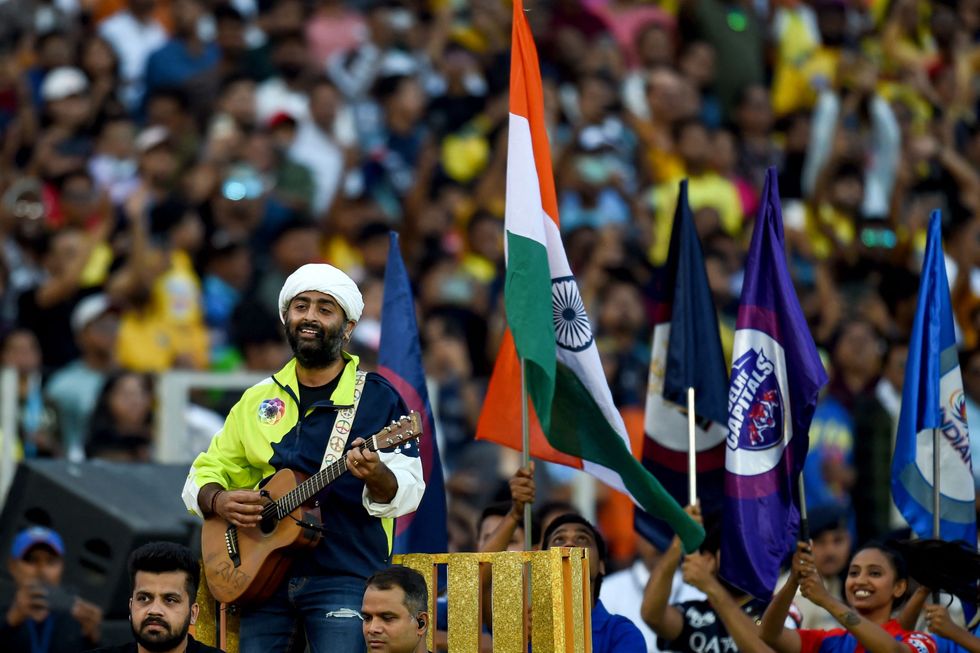By Nadeem Badshah
PILGRIMS are being urged to take extra precautions while visiting holy sites so that they can handle the scorching temperatures caused by global warming.
Scientists from the Massachusetts Institute of Technology (MIT) have warned officials in Saudi Arabia over the increasing temperatures due to climate change during the five-day Hajj pilgrimage.
The timing of Hajj changes each year, but it’s set to take place in summer between 2047 and 2052 and from 2079 to 2086, where it can reach up to 54° Celsius.
Temperatures above 39°C are classified as a “danger” while a wet-bulb temperature of above 51°C - a measure of how well sweating cools the body down - is deemed an “extreme danger” with a high risk of heatstroke.
In India, temperatures can soar to a maximum of 33°C between January and March during the Hindu pilgrimage of Kumbh Mela on the banks of River Ganges.
In summer, visitors to Amritsar’s Golden Temple face sweltering temperatures of up to 50°C.
Religious experts have urged pilgrims to undertake training to prepare themselves for the heat by applying lots of sunscreens and taking plenty of water.
Mohamed Omer, a government adviser on Muslim issues, told Eastern Eye: “My son recently returned from Hajj. He had to walk for two hours because he could not find a transport from Mecca.
“People are not prepared for the heat. Their perception is that it isn’t that hot, but they need to be hydrated all the time. Some cannot tolerate direct sunlight.
“Everyone wants to do the rituals, but Islam does not say put your health at risk or put yourself through hardship.
“People should be prepared for the pitfalls if they want the once-in-a-lifetime experience. However, some do not attend the courses before Hajj; they need to do that, and more awareness needs to be raised among the Hajj providers.
“When you run a marathon you train for it, so why don’t we do that for Hajj, as you have to be physically prepared to walk a lot.”
MIT scientists said climate change will increase the number of days in each summer, where wet bulb temperatures will exceed the “extreme danger” limit.
There are measures in place in Mecca - including nozzles that spray a mist of water in some outdoor locations - but researchers say officials may need to limit the number of pilgrims at a time.
Meanwhile, India’s Golden Temple is visited by an estimated three million people each month.
It is not compulsory for Sikhs to visit the gurdwara in Punjab, northern India, but many choose to as part of their faith.
Sikhs from the UK are expected to travel from India to Kartarpur, Pakistan, to mark the 550th birthday of Guru Nanak in November.
Harmander Singh, from the Sikhs in England think-tank, told Eastern Eye: “I went to the Golden Temple once at 02.00 am when it was cool. I couldn’t stand in the heat during the day in the village. People should take precautions and not go if they are frail.”
“Everyone is trying to do zero emissions, but countries such as India, China and America are burning more fossil fuels.
In July, Prince Harry was among the celebrities criticised for flying in a private jet to an event on tackling climate change, organised by Google in Sardinia.
The Duke of Sussex defended his use of private jets, saying that he flies commercial “99 per cent” of the time but occasionally needs to go private for the sake of his family’s safety.
“No one is perfect,” he said.
Asad Rehman is executive of War on Want, an anti-poverty charity, and has previously served on the boards of Friends of the Earth International and Global Justice Now.
He said the climate is a threat now for pilgrims and for people living in poverty in South Asia.
Rehman said: “There is huge hypocrisy - 50 per cent of the global emissions come from 10 per cent of the world’s population and the poorest 50 per cent are only responsible for 10 per cent, but they are the worst impacted.
“The rich have to take responsibility because they are more responsible. They are able to have private jets and lifestyle that consume huge resources.
“The most vulnerable continent is the Indian sub-continent.
“Pakistan saw droughts and famines with temperature going up to 51° C this year. The pattern of floods and sea rise is the same in Bangladesh. In India, Chennai is facing water shortage - it is going to get much worse."





 Priyanka Chopra calls herself nascent in Hollywood as 'Heads of State' streams on Prime VideoGetty Images
Priyanka Chopra calls herself nascent in Hollywood as 'Heads of State' streams on Prime VideoGetty Images  Priyanka Chopra wants to build her English film portfolio after Bollywood successGetty Images
Priyanka Chopra wants to build her English film portfolio after Bollywood successGetty Images  Ilya Naishuller, Priyanka Chopra and John Cena attend the special screening for "Head of State" Getty Images
Ilya Naishuller, Priyanka Chopra and John Cena attend the special screening for "Head of State" Getty Images








 Arijit Singh performing Instagram/
Arijit Singh performing Instagram/ Arijit Singh clicked during a performance Getty Images
Arijit Singh clicked during a performance Getty Images 


 Liam Gallagher accepts Oasis' award for 'Best Album of 30 Years' Getty Images
Liam Gallagher accepts Oasis' award for 'Best Album of 30 Years' Getty Images  Liam Gallagher plays to a sell out crowd at the Universal AmphitheatreGetty Images
Liam Gallagher plays to a sell out crowd at the Universal AmphitheatreGetty Images Liam and Noel Gallagher perform together in Cardiff for the first time since 2009 Instagram/oasis
Liam and Noel Gallagher perform together in Cardiff for the first time since 2009 Instagram/oasis